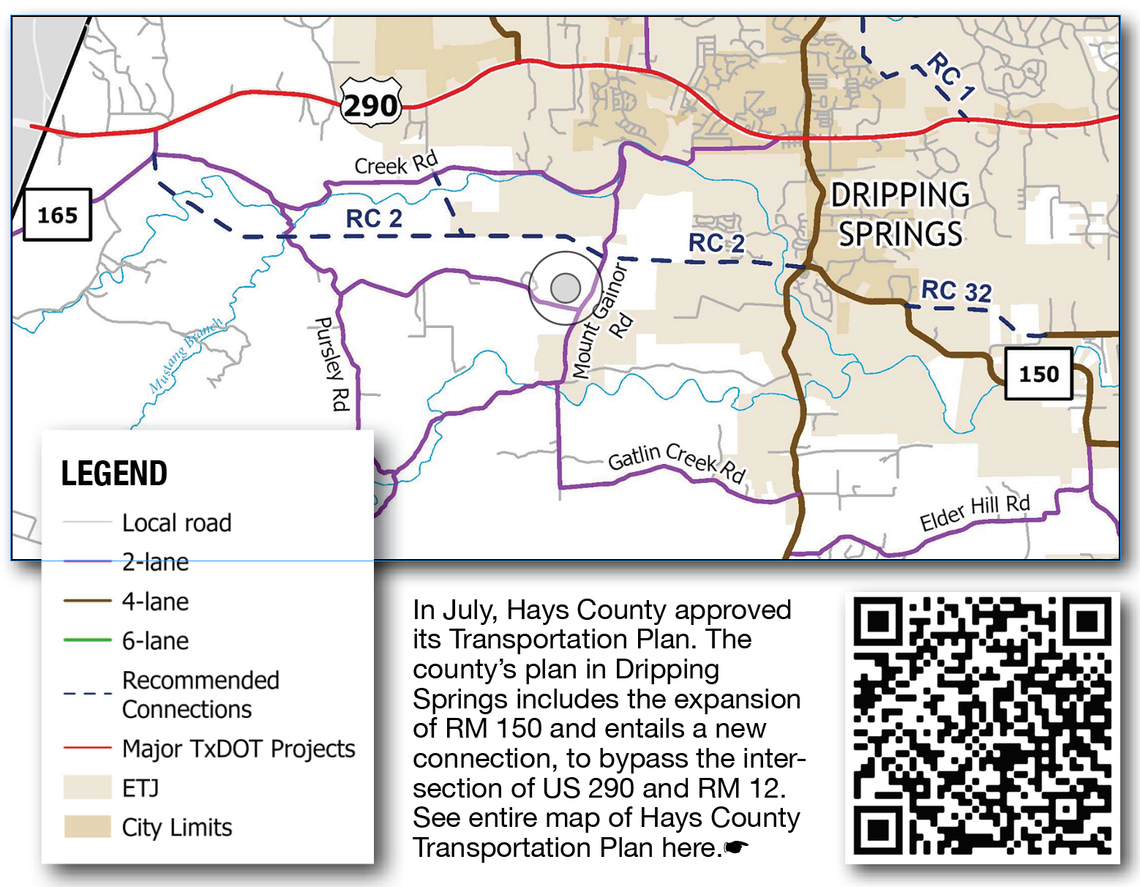By Sahar Chmais
The growth of Dripping Springs seems inevitable, and as the population grows, so does traffic. Dripping Springs is in the process of adopting the Transportation Master Plan — frowned upon by some residents and welcomed by others.
Dripping Springs’ population has more than doubled since 2010, with more than 4,000 residents living in the city as of 2019. Residents expressed their worries to the Planning and Zoning Commission (P&Z), that if the city’s growth continues and brings more roads along with it, the city’s charm will be lost. Others were concerned about the placement of planned roads and whether they would cut through their ranches and backyards.
Residents had three opportunities to participate in the planning process, where the city gathered feedback through in-person and virtual town hall meetings. The biggest feedback from these meetings addressed congestion on major routes, and the second dealt with congestion on secondary routes.
The P&Z unanimously approved the recommended transportation plan, and now it is up to city council to give its final approval.
“This is a planning tool that sets the stage for the city to be able to cause developers, when they acquire property and want to develop it,” said Planning and Zoning Chair, Mim James, “to recognize that there is a need for transportation construction to move cars around our community.”
The commission listened to residents’ concerns and created a discussion-based environment, instead of just allowing two minutes, and answered their questions.
The plan shows some proposed roads going through residents’ ranches and backyards. To address those concerns, James said that the map shows a general overview of where the roads should be, but they will work out exact placement as these road plans become a reality.
Additionally, commissioners assured residents that while the city does have eminent domain powers, the city will not use those powers to take land for roadways. On the other hand, Hays County uses its power of eminent domain and will contact any residents should roadways go through their properties.
In July, Hays County approved its Transportation Plan. The county’s plan in Dripping Springs includes the expansion of RM 150 and entails a new connection, to bypass the intersection of US 290 and RM 12.
In order to add on to RM 150, the county will have to go through existing ranches.
“The ranches they are proposing going through are good friends of mine that have had those ranches their entire life,” said Jan Wesson, a Caliterra resident. “The city is saying they won’t buy a ranch without [owners] wanting it, but the county will do eminent domain. That was real misleading. Just because the city won’t do it, the county is going to do it for them, the county will take those ranches. My neighbor doesn’t plan on selling, but they will force her to sell.”
Dripping Springs is not in charge of constructing RM 150, and the city will not take over any properties to build roadways, explained James.
Roads on the map, which are within the city’s transportation plan and not the county’s, will only come about when developers come in.
Having a transportation plan only shows incoming developers what roads they will need to construct in order to build their subdivisions, James said. Developers will also be in charge of figuring out the details, such as environmental screening and more.
“I understand it, being a fast-growing community, we need to have a plan,” said Yolanda Jones, Dripping Springs resident. “I worry that sometimes the county supersedes what happens in the city and they’re the ones not open to listening to our point of view as homeowners, but also the ranchers, who are our neighbors. That, I think, worries me the most. It’s very important to have a plan, but I don’t want a four-lane highway in my backyard.”
Dripping Springs City Council will make a decision about the Transportation Master Plan on Tuesday night. More to come after a decision is made.











